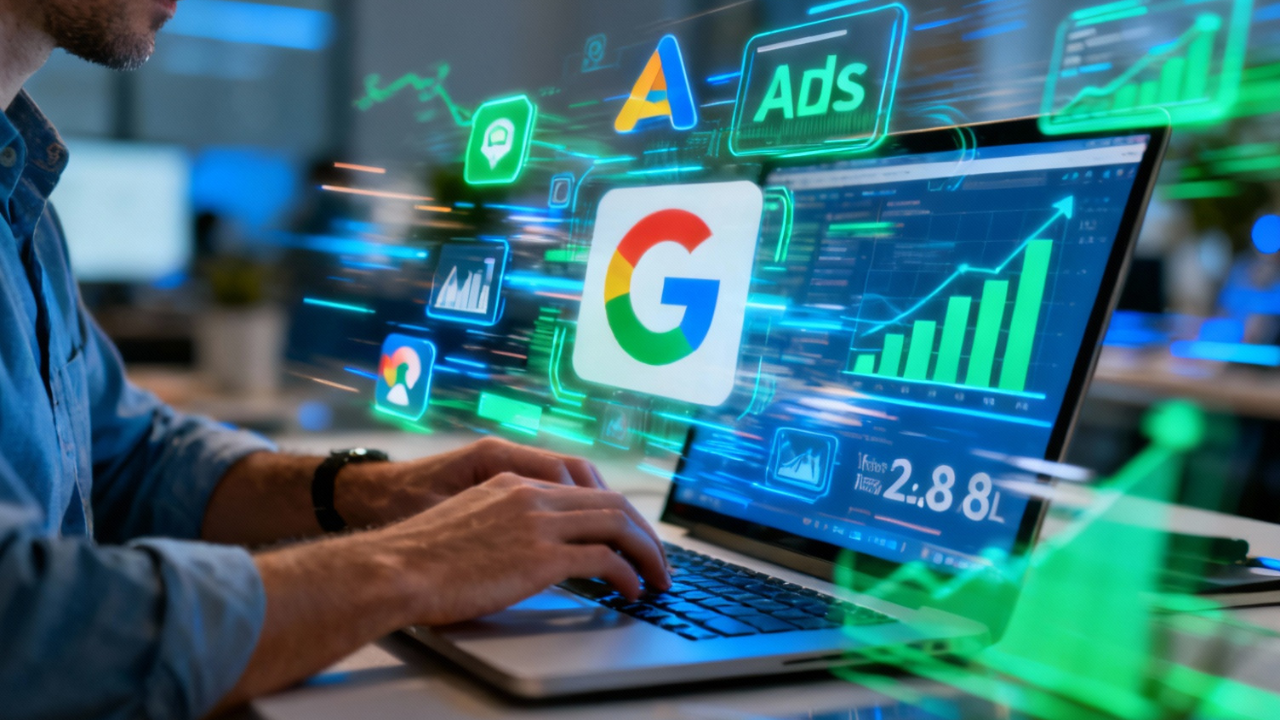
Best Practices of SEM for B2B: How to Drive Quality Leads in 2025
In today’s digital-first world, business buyers are increasingly behaving like consumers—doing independent research, comparing multiple vendors online, and expecting fast, relevant results. Based on Google’s 2024 survey, 47% of B2B spending now takes place online, while 68% of B2B buyers said they plan to increase their use of digital shopping channels in the future.
For B2B brands, this shift presents a huge opportunity—but also fierce competition. Being visible online is no longer optional; it’s essential. While SEO (Search Engine Optimization) builds long-term visibility, it takes time to mature. Search Engine Marketing (SEM), on the other hand, helps you appear instantly in front of potential buyers who are already searching for your product or service.
In this article, we’ll dive into the best practices of SEM for B2B businesses, helping you maximize ROI, capture quality leads, and stay ahead of digital trends.
Why SEM Matters for B2B
Unlike B2C, the B2B buying journey is complex. It involves multiple decision-makers, longer sales cycles, and often, higher-value transactions. That’s why SEM can be a game-changer—it allows you to:
Target Intent-Driven Audiences
SEM enables you to reach users who are actively searching for solutions like yours — people who already have intent. This is a major advantage compared to other marketing channels like social media or display ads, which rely more on passive exposure.
For example, if someone searches “enterprise CRM solution Singapore,” it’s safe to assume they’re already in the market for that product. By bidding on this keyword, your ad appears at the exact moment when that potential client is ready to learn, compare, or buy.
In the B2B world, where lead quality often matters more than quantity, intent-based targeting ensures your marketing budget is focused on real opportunities rather than cold audiences.
Pro tip: Use different keyword match types (broad, phrase, exact) to control how closely a user’s search query needs to match your target keyword. This helps you filter out irrelevant traffic and focus on users with the highest intent.
Control Your Visibility
With SEM, you’re in full control of when, where, and to whom your ads appear. Unlike organic SEO, where algorithm updates and competition can affect your ranking, SEM gives you the flexibility to decide:
- Which keywords trigger your ads
- Which locations you want to target (for example, Singapore, Malaysia, or Southeast Asia)
- What times of day your ads appear
- Who sees your ads, based on factors like device type, demographics, or even company size
For instance, if your B2B company targets enterprise clients in Singapore and Indonesia, you can allocate more budget to these regions while reducing spend in less relevant markets.
You can even tailor different ad messages for different audiences. A small business might respond better to “affordable CRM tools,” while a large enterprise might be drawn to “scalable enterprise CRM software.”
This level of precision ensures every dollar you spend is intentional and optimized toward reaching the right people in the right place at the right time.
Measure Results Accurately
One of the biggest strengths of SEM is its transparency and measurability. Every click, impression, and conversion can be tracked in real time.
Using tools like Google Ads, Google Analytics 4, and Google Tag Manager, you can monitor:
- How many people saw your ad (impressions)
- How many clicked it (CTR – Click-Through Rate)
- How much you paid for each click (CPC – Cost Per Click)
- How many leads or conversions were generated (Conversion Rate)
- How much revenue each campaign brought in (ROAS – Return on Ad Spend)
This data-driven approach helps you understand what’s working and what’s not. For example, if one ad group has a high CTR but low conversion rate, it might indicate a mismatch between ad messaging and landing page content.
In B2B marketing—where every lead can represent a significant deal—having this kind of visibility allows you to make smarter, faster decisions that directly impact your bottom line.
Set up conversion tracking before launching any campaign. This ensures every form submission, phone inquiry, or demo request is recorded and attributed correctly.
Optimize Continuously
SEM isn’t a one-time effort—it’s a process of constant optimization. With access to live performance data, you can refine your campaigns regularly to improve efficiency and results.
You can test:
- Ad copy: Try different headlines or CTAs to see what drives more engagement.
- Keywords: Add high-performing search terms and remove underperforming ones.
- Bid strategies: Adjust bids to focus more on keywords that convert best.
- Landing pages: Experiment with layout, messaging, or offers to improve conversion rates.
This continuous improvement is especially valuable in B2B marketing, where market trends and buyer behaviors change frequently. For example, a new industry buzzword or emerging pain point could shift how your audience searches for solutions.
By staying agile and optimizing your campaigns based on performance data, you ensure that your brand remains visible, competitive, and relevant—no matter how the market evolves.

1. Start with Your Audience’s Pain Points
The first rule of B2B SEM: know your audience deeply.
Before crafting ad copies, understand what keeps your prospects up at night. Are they struggling with rising operational costs, slow processes, or outdated systems?
Example:
If you’re a SaaS company offering workflow automation, your ad could highlight:
“Tired of manual reporting? Automate your workflow and save 20+ hours weekly.”
By mentioning a specific pain point and offering a clear benefit, your ad instantly becomes relatable and persuasive.
Talk to your sales team—they’re on the frontlines and can provide real feedback on what clients are asking about. Use this information to shape ad messages that resonate emotionally and logically.
2. Speak the Language of Your Audience
Language matters, especially in B2B SEM. The tone, phrasing, and even dialect can influence how your audience perceives your brand.
In Singapore, for example, using Singlish in certain contexts can make your ad feel more authentic and approachable—especially if you’re targeting local SMEs. But when reaching international clients, stick with clear, professional English.
Example:
- Local tone: “Need faster leads ah? Try our AI ad tool today lah!”
- Professional tone: “Boost your leads with our AI-powered advertising platform.”
Your ad language should reflect how your target audience speaks. This cultural and contextual alignment builds trust and drives engagement.
3. Balance Between Short-Tail and Long-Tail Keywords
Keyword strategy is the heart of SEM. But choosing between short-tail and long-tail keywords depends on your goals.
- Short-tail keywords (e.g., “CRM software”) bring high search volume but tough competition.
- Long-tail keywords (e.g., “CRM software for small manufacturing businesses”) have lower volume but higher intent and better conversion rates.
For B2B, it’s best to use a mix of both:
- Use short-tail keywords for brand visibility.
- Use long-tail keywords for targeted, ready-to-convert audiences.
Use tools like Google Keyword Planner, Ahrefs, or Semrush to identify keyword trends and search intent. Don’t forget to include negative keywords to avoid irrelevant clicks that waste your ad spend.
4. Consider Brand Keywords for Established Businesses
If your brand already has awareness in the market, it’s smart to bid on brand-related keywords (e.g., “KPI Media Singapore,” “HubSpot CRM software”).
Why? Because:
- Competitors may bid on your brand name to steal your traffic.
- It ensures that your potential customers find your official site easily.
- Branded clicks often have higher conversion rates and lower CPCs (Cost Per Click).
Even if your SEO ranks you high organically, paid ads for brand terms help you dominate search results and maintain credibility.
5. Create a Dedicated Landing Page for Each Campaign
Your SEM efforts won’t deliver if you send traffic to a generic homepage. Each campaign deserves a dedicated landing page that directly reflects your ad’s promise.
Your landing page should:
- Match ad intent: If your ad mentions “free demo,” the page should lead with a demo offer.
- Use target keywords: Include relevant keywords in the title, header, and meta descriptions.
- Offer clarity: Make sure your CTA (Call-To-Action) stands out—like “Book a Free Consultation” or “Download the Guide.”
- Load fast: A slow page can hurt both user experience and ad performance.
Tools like Unbounce, HubSpot, or Webflow can help you create optimized landing pages quickly with built-in A/B testing features.
6. Do Regular A/B Testing
In SEM, there’s no “set it and forget it.”
What works today might not work next month. That’s why A/B testing (or split testing) is essential.
You can test:
- Ad copies: Try different headlines, CTAs, or value propositions.
- Keywords: Compare performance between variations.
- Budgets: Allocate different budgets across campaigns and see where ROI is highest.
Example:
You might test two ad headlines:
- “Boost Your Sales Pipeline with AI-Driven Leads”
- “Get 3X More Qualified B2B Leads with Automation”
Measure which one gets a better CTR (Click-Through Rate) and conversion. Data-driven testing helps refine your campaigns continuously.

7. Monitor Search Terms and Stay Updated with Trends
One of the most overlooked SEM practices is regularly checking your search terms report.
It tells you what real users typed into Google before clicking your ad. Sometimes, you’ll find:
- New keyword opportunities.
- Irrelevant queries wasting budget.
- Signs of shifting trends in audience behavior.
For instance, if you’re in the cosmetics manufacturing industry, this month’s trending keyword might be “blush on”, but next month, it could be “cream contour”.
Keeping an eye on these changes helps you adapt quickly, ensuring your ads stay relevant and cost-effective.
8. Keep Your Website Updated and Track Everything
Your website is your digital storefront. Even the best SEM campaigns won’t convert if your website looks outdated, loads slowly, or lacks clear CTAs.
Before launching ads, make sure to:
- Update your website design and content.
- Set up conversion tracking using tools like Google Analytics 4 and Google Tag Manager.
- Implement lead tracking (via forms, phone calls, or CRM integrations).
- Install pixels for retargeting (e.g., Google Ads, Meta Ads).
Tracking ensures that every click and conversion is recorded, allowing you to optimize campaigns based on data, not guesswork.
9. Don’t Ignore Retargeting
In B2B, most visitors won’t convert on their first visit. Retargeting helps bring them back.
Use Google Display Network or Remarketing Lists for Search Ads (RLSA) to:
- Show ads to users who have previously visited your site.
- Re-engage warm leads with special offers or helpful content.
- Stay top of mind during the long B2B decision cycle.
For example, after someone visits your “pricing” page but doesn’t convert, retarget them with an ad that says:
“Still comparing options? See how our solution reduces costs by 30%.”
It’s gentle, personalized, and effective.
10. Leverage AI and Automation in SEM
As SEM becomes more competitive, AI and automation are changing the game. Google Ads now offers Smart Bidding, Performance Max campaigns, and AI-generated ad suggestions—helping marketers save time and improve precision.
For B2B, automation can:
- Identify high-intent leads faster.
- Adjust bids in real-time based on audience behavior.
- Predict which keywords are likely to drive conversions.
However, AI should complement human strategy, not replace it. Keep monitoring results and add your expertise to fine-tune campaigns.
11. Measure, Analyze, and Optimize Continuously
Data is your best friend in SEM. Track metrics like:
- CTR (Click-Through Rate) – to measure ad relevance.
- CPC (Cost Per Click) – to manage your budget efficiently.
- Conversion Rate – to gauge lead quality.
- ROAS (Return on Ad Spend) – to measure overall performance.
Review reports weekly or bi-weekly and look for patterns. If certain keywords or ad sets underperform, pause or tweak them. If a landing page has high bounce rates, test a new layout or CTA.
The more you analyze and adapt, the more effective your SEM strategy becomes.
12. Partner with the Right SEM Agency
Running SEM campaigns effectively takes time, data, and expertise—especially in B2B, where targeting and messaging are complex. Partnering with a specialized agency like KPI Media ensures that your campaigns are backed by strategic insight, AI-powered optimization, and real business outcomes.
At KPI Media, a performance marketing agency in Singapore, we help enterprises leverage paid media strategies to achieve measurable results. Whether you’re looking to boost lead generation, optimize ad performance, or integrate SEM with other digital channels, our team is ready to help you grow.
👉 Book a free consultation with our Chief Growth Officer today to explore how your business can stay ahead of the AI curve.
Conclusion
SEM is no longer just a “nice-to-have” for B2B companies—it’s a powerful, measurable, and scalable channel that can drive qualified leads and boost ROI.
From understanding your audience’s pain points to running A/B tests, optimizing landing pages, and leveraging automation, every step helps strengthen your visibility in an increasingly competitive landscape.
Remember, the key to B2B SEM success isn’t just clicks—it’s about connecting with the right people, at the right time, with the right message.
More Blogs



Let us build your acquisition engine
Our Founder will personally propose a custom media plan to crush your KPIs.





.png)






.webp)

.webp)
